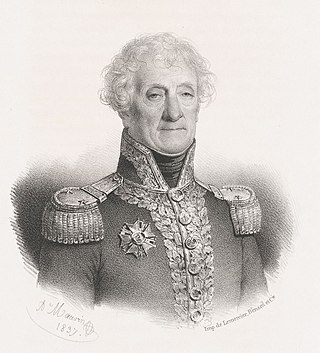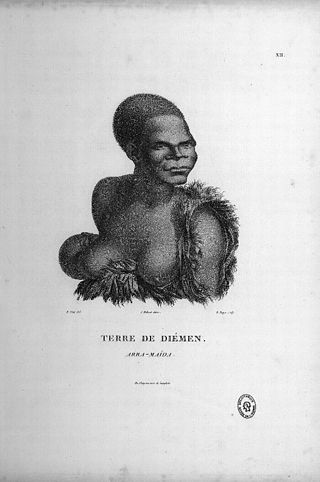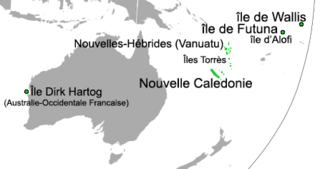
Louis Claude de Saulces de Freycinet was a French Navy officer. He circumnavigated the Earth, and in 1811 published the first map to show a full outline of the coastline of Australia.

Nicolas Thomas Baudin was a French explorer, cartographer, naturalist and hydrographer, most notable for his explorations in Australia and the southern Pacific. He carried a few corms of Gros Michel banana from Southeast Asia, depositing them at a botanical garden on the Caribbean island of Martinique.

Jean-Baptiste Louis Claude Théodore Leschenault de La Tour was a French botanist and ornithologist.

François Auguste Péron was a French naturalist and explorer.

The Kangaroo Island emu or dwarf emu is an extinct subspecies of emu. It was restricted to Kangaroo Island, South Australia, which was known as Ile Decrés by the members of the Baudin expedition. It differed from the mainland emu mainly in its smaller size. The species became extinct by about 1827.

Rear-Admiral Jacques Félix Emmanuel Hamelin was a French Navy officer and explorer. He fought in numerous naval engagements during the French Revolutionary and Napoleonic Wars and conducted several exploratory voyages in the Indian Ocean and Southern Ocean.
René Maugé was a French zoologist known for his work accompanying the Baudin Expedition.
The Baudin expedition of 1800 to 1803 was a French expedition to map the coast of New Holland. Nicolas Baudin was selected as leader in October 1800. The expedition started with two ships, Géographe, captained by Baudin, and Naturaliste captained by Jacques Hamelin, and was accompanied by nine zoologists and botanists, including Jean-Baptiste Leschenault de la Tour, François Péron and Charles-Alexandre Lesueur as well as the geographer Pierre Faure.

Charles Pierre Claret, comte de Fleurieu was a French Navy officer, explorer, hydrographer and politician. He served as Minister of the Navy under Louis XVI, and was a member of the Institut de France. His brother was botanist Marc Antoine Louis Claret de La Tourrette.

Géographe was a 20-gun Serpente-class corvette of the French Navy. She was named Uranie in 1797, and renamed Galatée in 1799, still on her building site. Her builder refused to launch her, as he had not been paid to that time. Finally launched in June 1800, she was renamed Géographe on 23 August 1800.

Naturaliste was one of the two-vessel Salamandre-class of galiotes à bombes of the French Navy. Under Jacques Hamelin, and together with Géographe she took part in the exploration of Australia of Nicolas Baudin.

Adele Island is an island located in the Indian Ocean approximately 104 kilometres (65 mi) North of Ardyaloon off the Kimberley coast in Western Australia.

François-André Baudin was a French Navy officer and nobleman. His nephew Auguste Baudin also served as an officer in the French navy.
Charles-Pierre Boullanger (1772–1813) was a French geographer who served on Nicolas Baudin's scientific expedition to the South Pacific and its islands from 1800 to 1803. He was a midshipman cartographer and hydrographic engineer on the survey vessel Le Géographe with the sister ship Naturaliste. During this expedition he produced, with Charles-Alexandre Lesueur, a detailed map of the east coast of Australia.
The Freycinet Map of 1811 is the first map of Australia to be published which shows the full outline of Australia. It was drawn by Louis de Freycinet and was an outcome of the Baudin expedition to Australia. It preceded the publication of Matthew Flinders' map of Australia, Terra Australis or Australia, by three years.
François Désiré Breton was a French naval officer.
The Casuarina schooner was purchased by Nicolas Baudin at Port Jackson (Sydney) in 1802, during the Baudin expedition to Australia. The vessel took its name from the local casuarina timber used in her construction.

Arra-Maïda was an Aboriginal Tasmanian woman who was encountered by members of the French expedition to Australia led by Nicolas Baudin in January 1802 on the shores of Bruny Island.

French Western Australia was a French territorial claim in modern-day Western Australia. It was made at Dirk Hartog Island by an expedition under French explorer Louis Aleno de St Aloüarn in 1772.











